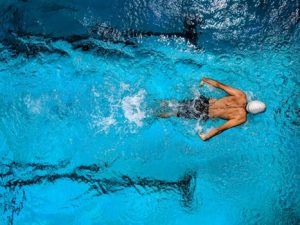
SHOULDER INJURIES IN SWIMMERS
As a Swimmer and a Physiotherapist myself, often I am seeing a high number of Shoulder Injuries in this population. It is difficult to prevent these injuries, after all swimming is a repetitive overhead sport which in itself, is a common predictor for shoulder injury. However, more recent research has shown there are three key risk factors (among others) associated with development of shoulder injury in not only swimmers, but overhead athletes as a whole.
- REDUCED INTERNAL ROTATION MOBILITY
In a 2018 meta-analysis found that whilst their study did not yield significant results, they were able to find a correlation between reduced glenohumeral internal rotation and shoulder injury in overhead athletes. Shoulder injury was almost twice as likely in athletes with reduced internal rotation of the shoulder than in athletes with normal internal rotation range.
Simply put, shoulders which had reduced internal rotation (pictured below) were at a higher risk of shoulder injury.
This can occur as a result of reduced ER:IR ratio, or more easily described as a lack of functional rotator cuff strength during activity. The rotator cuff functions to support the humeral head (top of the arm bone) in the socket, as the shoulder can move freely in a number of directions. This is why the shoulder is useful in swimming. However, as the shoulder is so mobile, it also places it at a high risk of injury due to instability, which can often occur with this dysfunction. If this risk factor is identified, swimmers can work with their physiotherapist to ensure that they are able to maximise their mobility in internal rotation, to improve their performance and reduce their risk of injury
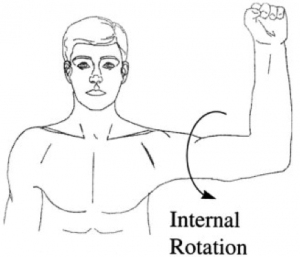
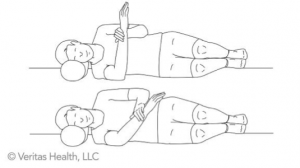
- EXTERNAL ROTATOR WEAKNESS
External rotation is the opposite movement to internal rotation, i.e. turning the arm upwards. It is performed by infraspinatus and teres minor – two rotator cuff muscles (which were mentioned earlier). It is important to note that external rotation is the opposite of internal, as the external rotators work to support the shoulder into internal rotation by slowly releasing. This is known as eccentric strengthening, and can help to reduce injury prevalence in swimmers.
Often I will prescribe eccentric external rotator strengthening to patients in order to open up their joint, and to relieve the “impingement-style” symptoms that swimmers will often experience. This is not only a treatment modality, but can also be used in prevention. It is important to remember that we are prescribing these exercises for OVERHEAD athletes, therefore to make them functional, we need to do them OVERHEAD (see picture below)
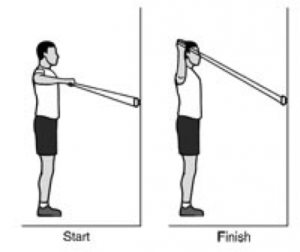
- SCAPULAR DYSKINESIS
Big fancy words for “shoulder blades which aren’t moving the way we want them to”. The shoulder blades are extremely important in supporting overhead movements. Often this can be a good place to start for preventing and rehabilitating shoulder injuries in our swimming population. It is important that we are able to develop good scapular stability throughout overhead movements, not only with movements to 90 degrees. A great exercise to try is dumbbell stars (see below, add weights and focus on squeezing shoulder blades), not to focus on lifting big weights, but to focus on good scapular position moving into an overhead position. These can obviously be progressed but are a good place to start.
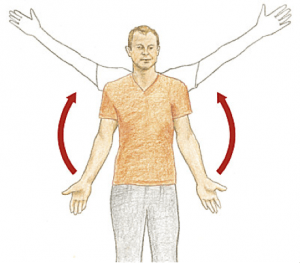
Please consult with your Physiotherapist or Allied Health Professional prior to commencing these exercises if you have previously experienced shoulder injury or shoulder issues.
Happy swimming!
Connor – Physiotherapist @ TPM
Disclaimer: this article is a bit research-heavy, however it provides some good information for swimmers to prevent injury and understand more about why they may be experiencing shoulder pain. If you have any questions about any of the material, feel free to contact me or e-mail me on connor@thephysiomovement.com.au


